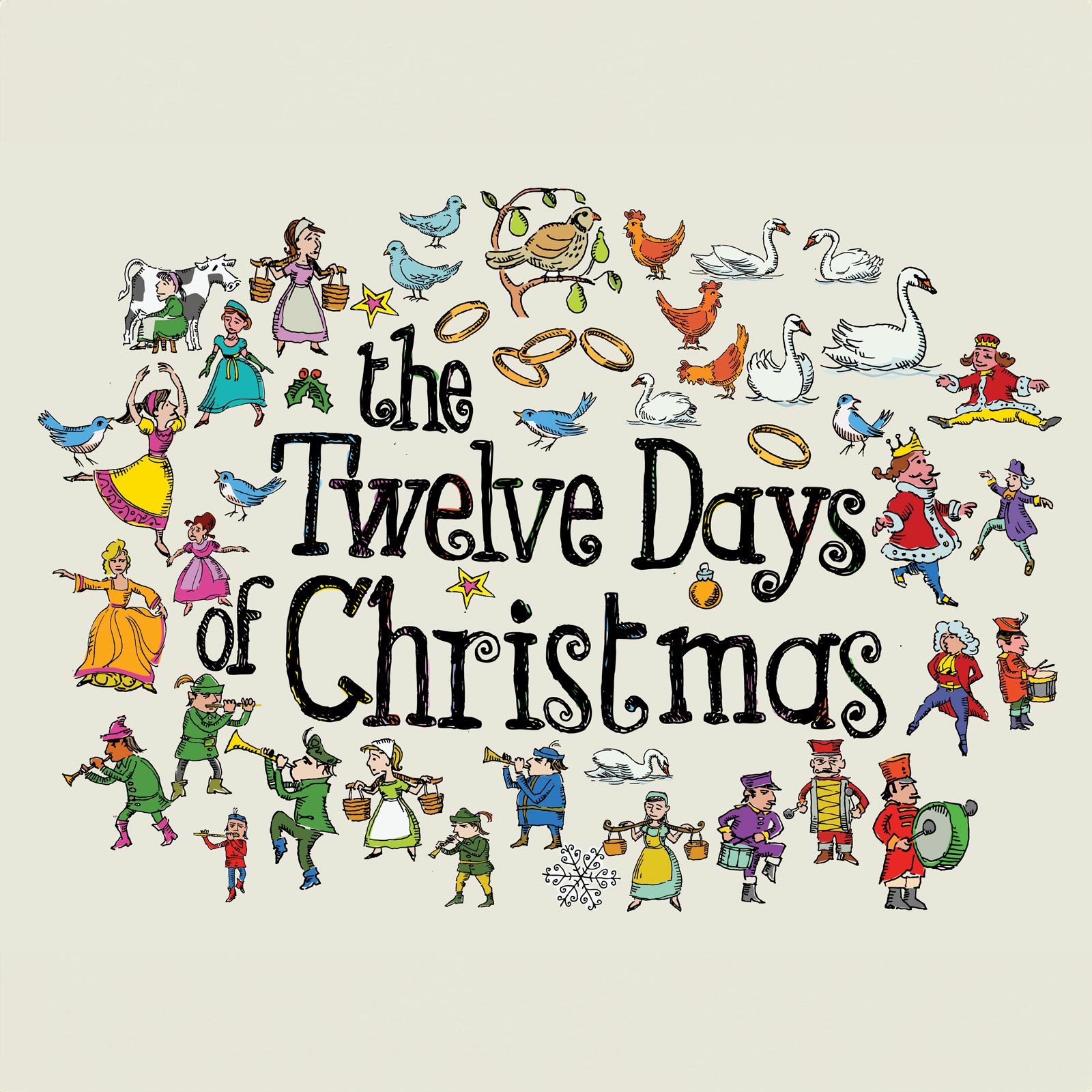The "12 Days of Christmas" song has probably gotten stuck in your head a whole bunch, but have you given any thought to the meaning behind it?

What Are the 12 Days of Christmas, and What Do They Mean?

Love it or hate it, “The 12 Days of Christmas” is a staple tune of, well, Christmas. Singing it over and over again, or perhaps yucking it up to a popular parody, is one of many favorite Christmas traditions. But it’s a bit bizarre! Why is it so long? Why 12 days? Why those gifts? (Can you even call flocks upon flocks of birds “gifts”?) And is there a more hidden tie-in to Christmas symbols?
If you’ve ever wondered about the meaning behind the 12 days of Christmas, don’t worry—we’ll get to the bottom of all of it. (Well, mostly.) We’re explaining how the classic carol evolved over the years, while revealing some surprising details you might not know. We even had a chat with Christmas expert Ed Daly, author of The Christmas Book: The Ultimate Guide to Your Favorite Holiday, to get the inside scoop straight from the source. And if you’ve ever wondered just how much those “12 Days of Christmas” gifts would set you back today, we’ve got answers for that too!
Get Reader’s Digest’s Read Up newsletter for more holidays, humor, cleaning, travel, tech and fun facts all week long.
When do the 12 days of Christmas start?
All singing aside, there actually is a historical basis for the traditional Christmas carol we all know and love. Christians have historically celebrated a period of 12 days surrounding Christmas. The nearly two-week time period starts and ends with two pretty significant holidays: Christmas on Dec. 25 and the Epiphany on Jan. 6.
What are the 12 days of Christmas?
Christians believe that the 12 days of Christmas mark the amount of time it took after the birth of Jesus for the magi, or wise men, to travel to Bethlehem for the Epiphany when they recognized him as the son of God. The specific time period was likely part of the early church’s effort to adapt pre-Christian celebrations that helped the ancient Europeans get through the long winter nights.
With Christmas as the first day, every one of the 12 days celebrates a different saint, from St. John the Apostle on Dec. 27 to the Virgin Mary on Jan. 1. Today, how—and when—the 12 days are celebrated by Christians around the world varies. Eastern Orthodox churches use a different religious calendar, so their 12 days of Christmas start on Jan. 7 and run through the Epiphany on Jan. 19. And while Catholics celebrate the Epiphany as a single day, some Protestant churches celebrate it until Ash Wednesday, leading into the season of Lent and Easter.
Gift-giving customs also differ in some cultures. In some Latin American cultures, Christians hand out presents on Jan. 6, which they celebrate as Three Kings Day, instead of Dec. 25. And other cultures give gifts all 12 days. Like a certain “true love” we’re familiar with, thanks to an earworm of a song.
What is the meaning behind “The 12 Days of Christmas”?
Well, let’s get one thing straight—it is not a secret-coded song that persecuted Catholics used to teach children scripture without drawing the ire of those in power. This oft-circulated internet theory claims that each numbered “gift” represents a symbol of Christianity: “three French hens” for the Holy Trinity, “eight maids a-milking” for the eight Beatitudes, etc. But Snopes has debunked this theory; it has enough inconsistencies, and little enough evidence, to be almost assuredly just a myth.
So, what is the meaning of “The 12 Days of Christmas”? Well, it doesn’t really mean anything. Instead, the song most likely began as a memory game for kids. That’s why it’s so dang long and repetitive!
“The first known version of it was in a 1780 children’s book called Mirth Without Mischief,” Daily explains. As he describes, “It was kind of like a more innocent ‘truth or dare.'” Basically, kids would challenge each other to recite the words from memory, adding on a new line every time (as the song does today). It was a Christmas activity where, if you messed up, you’d have to do a favor for whomever challenged you to the game, perhaps, or give them a kiss or some candy. “People would sing it at Twelfth Night [the eve of the Epiphany],” Daly says.
Have “The 12 Days of Christmas” lyrics changed over the years?

For as long as the song has been around, there have been slightly different versions of “The 12 Days of Christmas.” Even today, you’ll see some number jumbling, specifically among the bigger numbers: Is it 10 or 12 lords a-leaping, and 11 or 9 ladies dancing? And in past versions that can be found in old songbooks, it’s the narrator’s mother, not a true love, who gives all these lavish gifts.
Others still include gifts like “bears a-baiting” or “ships a-sailing” that you won’t find in the song today. And there may even be a “misheard lyrics” situation going on: Those “four calling birds” were probably originally intended to be “colly birds”—colly being an old-timey word for the color black.
And we’re likely misinterpreting one of the current lyrics as well. It’s not definitive, but it seems likely in the context of the song that the “five golden rings” are not referring to gold jewelry but instead to the markings on a ring-necked pheasant. That seems to make more sense (relatively speaking), since all the other gifts on the first seven days are birds. (So is that one pheasant or five pheasants?)
Either way, it’s a ton of birds! “Somebody was obsessed with birds when they came up with this!” jokes Daly.
The current version of the song is a little over a century old. Today, its final verse goes something like this:
On the twelfth day of Christmas, my true love sent to me
Twelve drummers drumming
Eleven pipers piping
Ten lords a-leaping
Nine ladies dancing
Eight maids a-milking
Seven swans a-swimming
Six geese a-laying
Five golden rings
Four calling birds
Three french hens
Two turtle doves …
And, of course, “a partridge in a pear tree!”
“The song we know today, the version we know of it, was written by a guy named Frederic Austin in 1909,” Daly says. That encompasses the words we know today as well as the familiar tune. “From there, once Christmas music became a ‘thing,’ then you start having artists like Perry Como and John Denver and the Muppets [perform it]. All of a sudden, it became something that people knew.” And once you know it, you can’t un-know it. The Christmas music library is rife with versions and funny Christmas song parodies, and all year round it’s not uncommon to hear someone add “… and a partridge in a pear tree!” to the end of a comically long list.
What do the gifts in “The 12 Days of Christmas” represent?
While Snopes has debunked the idea that “The 12 Days of Christmas” gifts were originally meant as a secret code for Christian teachings, it’s still fascinating to see how these numbers so perfectly align with biblical references. So, if you like religious Christmas quotes, then you’ll love the references in the song.
- Partridge in a Pear Tree: The partridge represents Jesus Christ, who is seen as a symbol of salvation and peace.
- Two Turtle Doves: The two turtle doves are the Old and New Testament in the Bible.
- Three French Hens: The French hens are interpreted as being the virtues of faith, hope and love.
- Four Calling Birds: The birds represent the four Gospels in the Bible: Matthew, Mark, Luke and John.
- Five Golden Rings: The five golden rings are thought to represent the first five books of the Old Testament, also known as the Torah or Pentateuch.
- Six Geese a-Laying: The six geese refer to the six days of creation, as described in the Book of Genesis in the Bible.
- Seven Swans a-Swimming: The swans represent the seven gifts of the Holy Spirit also known as the seven sacraments in Christianity. These gifts are understanding, wisdom, counsel, fortitude, knowledge, piety and fear of the Lord.
- Eight Maids a-Milking: The maids are meant to represent the eight Beatitudes—the blessings listed by Jesus in the Sermon on the Mount.
- Nine Ladies Dancing: The ladies dancing are the nine fruits of the Holy Spirit, including love, joy and peace.
- Ten Lords a-Leaping: The 10 lords represent the Ten Commandments.
- Eleven Pipers Piping: The pipers represent the 11 apostles (excluding Judas Iscariot).
- Twelve Drummers Drumming: The 12 drummers are meant to represent the 12 points of belief in the Apostles’ Creed.
How do I calculate the number of gifts in “The 12 Days of Christmas”?
There are 364 gifts in “The 12 Days of Christmas.” When calculating this number, it’s important to note that each day includes all the gifts from the previous day. If you’re looking to confirm this calculation on your own, you can use this formula: n(n+1)(n+2)/6. “N” is the number of days, which in this case, is 12.
How much do “The 12 Days of Christmas” gifts cost?
Now you know that the song was never intended to be a serious portrayal of holiday gifts. But it’s still fun to speculate about what it would actually be like to give and receive those unique gifts—and the PNC Christmas Price Index provides a cost estimate every year. They account for everything from wages for the maids a-milking to the weirdly high cost of seven swans, the most expensive item.
And how much would those gifts set you back? In 2023, if you wanted to stay true to the song and get your “true love” each day’s gifts the number of times they’re mentioned in the song, that was 364 gifts, for a whopping $201,972.66. That’s 2.5% more than in 2022.
Daly’s main takeaway? “I’d rather take a trip around the world for two, for the price of [just] the swans!” he says.
Additional reporting by Jen McCaffery.
About the experts
|
Why trust us
At Reader’s Digest, we’re committed to producing high-quality content by writers with expertise and experience in their field in consultation with relevant, qualified experts. We rely on reputable primary sources, including government and professional organizations and academic institutions as well as our writers’ personal experiences where appropriate. For this piece on “The 12 Days of Christmas,” we spoke with Ed Daly, the author of The Christmas Book: The Ultimate Guide to Your Favorite Holiday. We verify all facts and data, back them with credible sourcing and revisit them over time to ensure they remain accurate and up to date. Read more about our team, our contributors and our editorial policies.
Sources:
- Ed Daly, author of The Christmas Book: The Ultimate Guide to Your Favorite Holiday
- How Stuff Works: “What Are the 12 Days of Christmas?”
- Slate: “Merry (Russian Orthodox) Christmas!”
- BBC: “Epiphany”
- Vox: “The 12 Days of Christmas: The story behind the holiday’s most annoying carol”
- Snopes: “The Twelve Days of Christmas”
- Library of Congress Blogs: “Is it ‘Four Calling Birds’ or ‘Four Colly Birds?’ A ‘Twelve Days of Christmas’ Debate”
- PNC Christmas Price Index
- Geeks Out of the Box: “The Twelve Days of Christmas: How many Presents in Total?”























